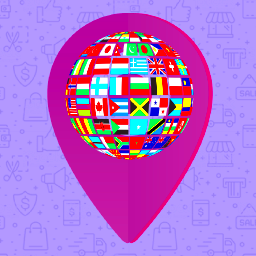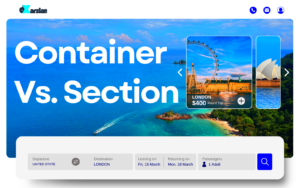Have you ever found yourself managing a WooCommerce store where delivering to customers seems like navigating a maze? If so, you’re definitely not alone! That’s where the concept of WooCommerce States, Cities, and Places comes into play. It’s a tool that helps organize geographic data, making it easier for both you and your customers. By enabling location-based features, you will enhance customer experience and streamline order processing. Plus, it’s all about making your shop more user-friendly! Ready to dive into how it works? Let’s go!
Benefits of Using States, Cities, and Places in WooCommerce

Implementing the States, Cities, and Places functionality in your WooCommerce store can significantly boost both sales and customer satisfaction. Here are some of the benefits:
- Enhanced Customer Experience: By providing appropriate location-based information, customers can easily find what they’re looking for, making the shopping experience more satisfying.
- Accurate Shipping Rates: With accurate location data, you can offer real-time shipping rates which help to avoid confusion at checkout.
- Targeted Marketing: Knowing where your customers are located allows for more effective marketing strategies, such as local promotions.
- Improved Product Availability: You can restrict product availability based on location, ensuring that only the items that can be shipped to specific places are shown.
- Simple Checkout Process: A streamlined checkout process minimizes cart abandonment, as customers won’t have to fill in lengthy address fields.
Incorporating States, Cities, and Places into your WooCommerce store not only simplifies the logistics but also fosters a more personal connection with your customers. Whether you’re a novice or a seasoned store owner, the advantages are too good to pass up!
How to Download WooCommerce States, Cities, and Places

If you’re looking to enhance your WooCommerce store by incorporating various states, cities, and places, you’re in luck! The process of downloading and implementing these essential tools is quite straightforward. Below are the simple steps you can follow to get your hands on the WooCommerce States, Cities, and Places data.
Here’s how you can do it:
- Visit the Plugin Repository: Head over to the official WooCommerce plugin repository. You can also find third-party websites that offer free downloads, but ensure they’re reputable.
- Search for States, Cities, and Places: Use the search bar to look for “WooCommerce States, Cities, and Places.” This will lead you to the pertinent resources.
- Download the File: Once you locate the desired plugin or data file, click the download button. The file is typically available in a .zip format for easy installation.
- Check for Compatibility: Before installing, always check that the version of the plugin is compatible with your version of WooCommerce to avoid any issues.
- Unzip the File: After downloading, extract the contents of the .zip file. This will give you access to the plugin files or CSV data required for setup.
And there you go! You’re one step closer to enhancing your WooCommerce store with comprehensive location data!
Setting Up WooCommerce Locations
Now that you’ve successfully downloaded the required data for states, cities, and places, it’s time to set everything up in your WooCommerce store! Proper configuration will ensure your customers can easily select their shipping locations, leading to a smoother shopping experience.
Here’s a step-by-step guide on how to set up WooCommerce locations:
- Login to Your Admin Dashboard: Start by logging into your WordPress admin panel where your WooCommerce site is hosted.
- Navigate to WooCommerce Settings: Go to WooCommerce > Settings in the left sidebar menu.
- Access the ‘General’ Tab: In the WooCommerce settings, you’ll see several tabs at the top. Click on the ‘General’ tab.
- Enable Geolocation: In the General settings, look for the ‘Default Customer Location’ option. Here, you can set it to ‘Geolocate’ which helps provide location data automatically.
- Import the Location Data: If you have a CSV file ready, you can import the states, cities, and places. Look for options like ‘Import Settings’ and upload your .csv file to populate locations.
- Save Changes: After you’ve made all your adjustments, don’t forget to hit the ‘Save Changes’ button at the bottom of the page!
With these simple steps, your WooCommerce store should now be fully equipped with locations ready for your customers, streamlining their shopping experience and helping you run your business more efficiently!
Customizing Your WooCommerce Location Settings
When it comes to running an online store, accurate location settings in WooCommerce can significantly enhance the shopping experience for your customers. Customizing these settings allows you to specify the regions your store serves, ensuring compliance with shipping regulations and giving customers confidence in their order process.
To customize your WooCommerce location settings, follow these steps:
- Access WooCommerce Settings: From your WordPress dashboard, navigate to WooCommerce > Settings.
- Go to General Settings: Once you’re in the settings menu, you’ll find the General tab where most location settings are located.
- Set Default Customer Location: Here, you can decide how WooCommerce determines the location of your customers. You can choose Default to customer location, Geolocate, or a custom option like Shop location.
- Shipping Locations: Specify where you ship to by checking the boxes under Shipping location(s)? This way, you can limit purchases to certain countries or regions.
It’s also vital to keep your regional settings aligned with your target audience. For example, if you’re targeting customers in Europe, you may want to ensure that you’re only offering shipping to countries within that continent.
Lastly, regularly check your settings, especially if you’re expanding your business to new regions. This way, you can always ensure a seamless shopping experience for your customers!
Common Issues and Troubleshooting
Like any platform, WooCommerce can have its quirks. Knowing the common issues related to states, cities, and locations can save you a lot of time and hassle. Here are some typical problems you might encounter and how to troubleshoot them:
| Issue | Possible Solution |
|---|---|
| Shipping Calculations Not Working | Ensure that you have set up your shipping zones correctly and that they cover the areas you want to ship to. |
| Incorrect State or City Data | Check if you’ve uploaded the latest version of the states and cities file. Sometimes outdated files can cause discrepancies. |
| Geolocation Not Functioning | Make sure your server supports geolocation and that you’ve enabled the geolocation option in the WooCommerce settings. |
| Some Customers Can’t Enter Their Address | Double-check the address fields in your checkout settings. Some fields may be set as “required,” leading to customer frustration. |
If you face issues that aren’t listed here, consider consulting the WooCommerce support forums or documentation. The WooCommerce community is vast and tends to be really helpful, offering solutions based on similar experiences!
Conclusion and Further Resources
In conclusion, having a comprehensive list of states, cities, and places is crucial for enhancing the functionality of your WooCommerce store. This information helps in streamlining the shipping process, improving customer experience, and ensuring accurate tax calculations. By utilizing the free download of WooCommerce states, cities, and places, store owners can save time and effort while ensuring their store is accessible to customers across different regions.
To help you make the most of the resources available, here are some further resources and tips:
- WooCommerce Documentation: Dive into the official WooCommerce documentation for further guidance on setting up your store effectively.
- Community Forums: Join WooCommerce community forums to interact with other users. You can share ideas and seek assistance from fellow store owners.
- Plugins: Explore additional plugins that can enhance your store’s capabilities, such as shipping calculators or tax management tools.
- Online Tutorials: Utilize online video tutorials that demonstrate various WooCommerce features, including how to implement the states, cities, and places data.
| Resource Type | Description | Link |
|---|---|---|
| Documentation | Official WooCommerce guide on features and settings. | WooCommerce Docs |
| Community | Forums for discussions and problem-solving. | WooCommerce Forums |
| Tutorials | Step-by-step video tutorials for newbies. | YouTube Tutorials |



